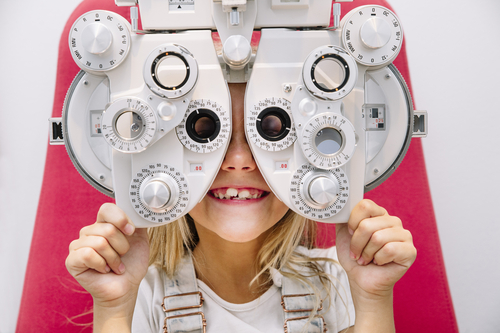
Protecting your vision and your child’s vision should always be a priority. August is Children’s Eye Health and Safety Month, and the American Academy of Ophthalmology has information to help you and your child experience clear vision for years to come.
Even if you’re thinking about starting a family, it’s never too early to begin. Keep reading to learn why Children’s Eye Health and Safety Month is so crucial!
Precautions for Pregnancy
Smoking increases the risk of premature birth, and preemies are more likely to have permanent vision loss or blindness. So it’s essential not to smoke if you are pregnant.
After birth, the baby’s risk of developing bacterial meningitis is five times that of a baby born to a nonsmoker, and bacterial meningitis can cause severe vision loss.
Milestones for Infants
At three months, your baby’s eyes can focus and follow objects. Test this by dangling toys in their line of vision and moving them.
By five months, your baby can see in three dimensions and will more accurately reach for objects because they now have depth perception. At nine months, their eye color should be established.
Precautions for Toddlers
You can catch early symptoms of vision problems at this age and prevent critical conditions from arising.
If your toddler’s eyes don’t align, meaning one looks straight while the other looks in another direction, it could be strabismus. Strabismus is a condition that is more common in children than adults but can also happen in adults.
If you notice this in your child, schedule an evaluation with an eye doctor so that vision correction can begin. It’s also important to get a measles vaccination.
The condition is a leading cause of childhood blindness worldwide. Prevent eye damage from chemical burns by keeping cleaning products locked away from curious toddlers.
If your child gets cleaning chemicals in their eyes, flush with water and seek medical attention immediately.
Precautions for School-Aged Children
Watch for farsightedness, which is a refractive error causing difficulty focusing on near objects. Over time as their eyes develop, this will self-correct, but extreme farsightedness can develop into strabismus or amblyopia, also known as lazy eye, if left uncorrected.
Limit Screen Time
Limiting screen time will reduce the chances that your child will experience digital eye strain. Studies indicate that near-work activities, including staring at screens, may be connected to both nearsightedness and digital eye strain.
Watch for a Change in Habits
A change in habits can indicate growing vision problems. A loss of interest in activities that rely on vision, losing track of sentences in reading, and turning the head to look at objects can all be symptoms.
Follow up with a visit to an eye doctor.
Precautions for Teens
The most common cause of blindness in children is eye injuries, and in children fourteen and older, the leading cause is baseball. More than ninety percent of eye injuries in children can be prevented with protective goggles.
Choose sports eye protectors made with polycarbonate lenses. Ensure children and teens who wear contact lenses maintain proper care and hygiene.
They are at higher risk for eye infections, vision loss, and, in severe cases of infection, blindness. Protecting your child’s eyesight isn’t child’s play, but it isn’t too difficult either.
Establishing a few simple habits can lead to a lifetime of good vision and eye health.
Do you want to learn more ways that you can help keep your child’s eyes and vision safe? Schedule an appointment at Eyecare Medical Group in Portland, ME, today!





